1750s, Scots-Irish immigration to 13 colonies rises, mainly Protestant small farmers and merchants leaving Ulster after periodic crop failures. More than 14,000 through 1759, 21,000 in 1760s and another 13,000 through 1775.
Most land at Philadelphia, and move west and south (down the Shenandoah Valley). They run into Indian resistance in Appalachian hills and valleys.
Also significant are Scottish Highland immigrants, most of whom land at Charles Town.
1750s, German Palatine families who came to New York’s Mohawk Valley in the 1712-1713, establish close relations with the Iroquois, in contrast to most white-Indian frontiers. Communities share skills (Palatine metal-working, mill construction; Iroquois corn, bean, squash agriculture). A number of intermarriages took place in Palatine churches; Palatines in turn learn and practice Iroquois condolence ceremony.
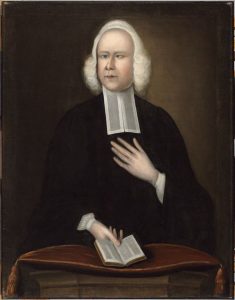 George Whitefield.
George Whitefield.
1750, Georgia settlers overturn Oglethorpe-Parliament ban on slavery in the colony. The 1742 victory over Spanish Florida, success of Carolina plantations and lack of indentured servants from Britain are factors. So is the advocacy of evangelist preacher George Whitefield who says his Georgia orphanage cannot survive financially without slave labor on his plantation. Parliament consents.
Within six years, Georgia adopts South Carolina slave code; within 25 years, slave population reaches 18,000. South Carolina slave masters soon dominate the colony. Irrigation works developed to support rice and indigo; sugar comes later.
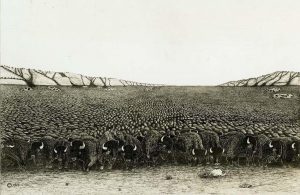 North America's large Buffalo population.
North America's large Buffalo population.
1750, Buffalo population of North America in excess of 60 million (2019 estimate), ranging from Alaska to northern Mexico, from Rockies to the Adirondacks, and even to tidewater Carolina. They will be all but wiped out less than 150 years later.
1750, Royal African Company dissolves after decades of crushing competition from Liverpool slave traders. Nine Gold Coast factories transferred to African Company of Merchants, including Cape Coast Castle and Fort Komenda.
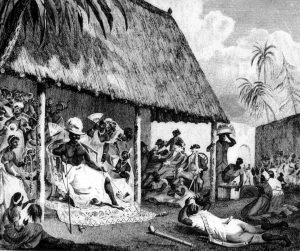 Slave trade expands.
Slave trade expands.
1750, King Tegbesu of Dahomey (Benin), who pays tribute to neighboring Oyo Empire (Yoruba), significantly expands slave trade. He is said to gain £250,000 in one year selling thousands of captives into slavery, mostly at the Whydah and Allada factories.
That compares to an estimated £300,000 annual profit by all Liverpool slave traders combined.
1751, In Saint-Domingue, François Mackandal leads escaped-slave maroon bands (numbering in the thousands) in poisoning campaigns and guerrilla raids against white plantations and French soldiers, in a prelude to revolution of 1791. Captured in 1758, he is burned at stake in Port-au-Prince. Said to have been a vodou priest.
1752, Forty-three Puritan families, originally from Dorchester, MA, arrive in Savannah with 586 African slaves obtained during their short intermediary stay in South Carolina.
1752, Mozambique becomes a colony of Portugal, which combines its old coastal settlements of the Isle of Mozambique and Sofala. European settlers are given large land grants (prazos). Gold is obtained from the Razvi Empire (Shona people) on the Zimbabwe plateau. Gold then pays for spices in India. Slave trade expands under European and African traders at Isle of Mozambique.
1754, Fighting breaks out between Britain and France (and their Indian allies) over forts on the western slope of the Appalachians. The initial skirmish between small detachments includes a young colonial officer, George Washington, May 28.
This is the undeclared beginning of the French & Indian War, which escalates in 1755, with both sides sending fleets.
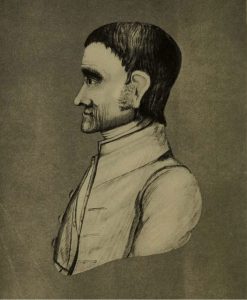 John Woolman.
John Woolman.
1754, John Woolman, a traveling Quaker preacher from New Jersey who has persuaded many Quakers to free their slaves, publishes Some Consideration on the Keeping of Negroes which lays out, in detail, the moral (and abolitionist) case against slavery.
He also opposes paying taxes that support colonial militias fighting in the French & Indian War. He also opposes cruelty to animals.
From Some Consideration...: “To suppose it right, that an innocent man shall at this day be excluded from the common rules of justice; be deprived of that liberty, which is the natural right of human creatures; and be a slave to others during life, on account of a sin committed by his immediate parents; or a sin committed by Ham, the son of Noah; is a supposition too gross to be admitted into the mind of any person who sincerely desires to be governed by solid principles.”
1754, Rosa Egipcíaca, a former slave and goldfield prostitute turned mystic, founds a convent for other former prostitutes in Rio de Janeiro. She develops a unique service that includes Cape Verdan batuque music and dancing. Most famously, she publishes the first Brazilian book written by an African woman, The Sacred Theology of Love of God. Only six of 290 pages survive.
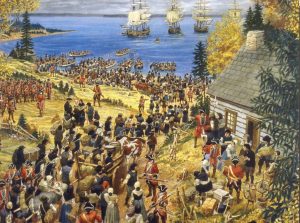 Groups of Acadians leave Nova Scotia.
Groups of Acadians leave Nova Scotia.
1755, British battle French in western Pennsylvania and Hudson River Valley, and begin expulsion of disgruntled French Acadians from Nova Scotia (which Britain won in 1713 Treaty of Utrecht). After many small but bloody actions through 1764, nearly 7,000 Acadians will have been deported to the 13 colonies (where they create communities in port cities), another 900 to Britain and 11,300 to France (many of whom ultimately settle in Louisiana where “Acadian” becomes “Cajun”).
1755, In Philadelphia, Anthony Benezet opens the first public school for girls in North America. A Quaker, he previously taught at the Friends’ English School where, in 1750, he added night classes for blacks.
1755, Great Lisbon Earthquake, fire and tsunami destroy the city, Nov. 1. Lagos and other Algarve coastal towns inundated. Tsunami washes over Cádiz, Madeira coast, Azores ports; rolls as far as Ireland, West Africa, Barbados and Brazil. Modern estimate of intensity is 8.7-9.0 R; of deaths, 40,000-50,000 in Portugal, Spain and Morocco. Lisbon’s royal Ribeira Palace is lost, including many archives of explorations.
1756, British finally declare war in French & Indian conflict, which now expands to Europe as the Seven Years’ War, May 18.
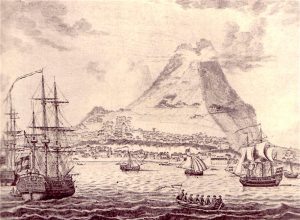 Ships arrive at St. Eustatius.
Ships arrive at St. Eustatius.
1756, Netherlands designates Sint Eustatius a “free port” in the Caribbean, open to ships of all nations with no duties or taxes imposed. By 1770 “Statia” is receiving more ships than Amsterdam or London. Its warehouses are packed with goods of every description and its Waterfort is used to hold slaves.
American colonial merchants rely upon Sint Eustatia to get around British restrictions on what they can buy and sell.
1757, Black slave revolt on Dutch Surinam plantations results in large band of runaways to greatly augment existing rainforest maroon band, which evolves into the Ndyuka community. Dutch choose to negotiate and recognize Ndyuka territorial sovereignty, Oct. 10; in return, they agree to return any future runaways.
Ndyuka soon move to Tapanahony valley, develop trade route between Surinam and French Guiana, and maintain independence to this day.
1758, British take Fort Duquesne (present-day Pittsburgh) and fortress at Louisbourg in Nova Scotia. French lose confidence of many Indian allies, who blame French for smallpox epidemic and restrictions on looting. British appeal to Indians with a promise to prohibit white settlement west of Appalachians if they are victorious.
1759, Portuguese charter the General Company of Pernambuco and Paraíba to sell slaves in northeastern Brazil.
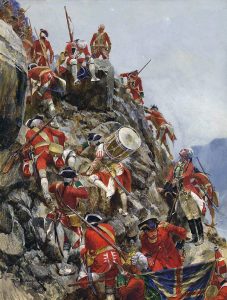 British fight and gain control of Quebec and Guadeloupe.
British fight and gain control of Quebec and Guadeloupe.
1759, British take Québec and Guadeloupe, and bring 18,000 slaves to latter over just four years. They open up North American markets to Guadeloupe’s resulting sugar boom.
 1760, Tacky (once a Fante chief) launches first of a series of uprisings, taking over Fort Haldane at Port Maria and the Frontier and Trinity plantations, April 7.
1760, Tacky (once a Fante chief) launches first of a series of uprisings, taking over Fort Haldane at Port Maria and the Frontier and Trinity plantations, April 7.
Rebels kill white overseers, commandeer arms and powder at Fort Haldane and see their numbers swell. But as responding militia and Maroons pursue rebels over two days, many return to plantations. A Maroon marksman kills Tacky, April 14. Some followers, trapped, commit suicide; others are captured.
Within weeks, Apongo (once a Dahomeyan chief) leads a similar uprising on island’s west end. Again, British rely on Maroons (this time from Accompong and Trelawney Town) to contain revolt. But it takes weeks of fighting before militia capture Apongo, July 3. British snuff out a half dozen other plots inspired by Tacky. Apongo’s surviving followers struggle into January 1761.
More than 60 whites and 400 black slaves die in the uprising. Apongo is starved to death. Others are burned alive. More than 500 slaves are shipped to Honduras and resold.
On Tacky: When he was a king, he said, his army captured Ashante, Nzema and Ahanta rivals and sold many to British. When enemies in turn captured and sold him, he ended up on Jamaica.
1760, British take Montreal, completing their seizure of New France, Sept. 8. Fighting shifts to Caribbean.
1760, The Valenciana mine opens in Guanajuato, Mexico, and quickly exceeds fading Potosí mine to become the Spanish Empire’s greatest silver producer over next 40 years. More than 3,000 enslaved Indians work the mine complex in early years, until Mexican independence when they are paid as freed men. Refined silver bars sent to Mexico City to be minted into Spanish pesos.
Bars and pesos are transported to Vera Cruz to be loaded on treasure fleets.
1761, Slavery abolished within Portugal at urging of Marquês de Pombal, who is directing the rebuilding and reorganization of the nation after earthquake. It’s not clear how former slaves merge into Portuguese society. But slavery continues to expand in Brazil and other Portuguese colonies.
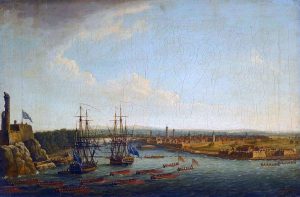 1762, Spain enters French & Indian War on France’s side, January, as British take Martinique, Saint Lucia, Grenada and St. Vincent from France.
1762, Spain enters French & Indian War on France’s side, January, as British take Martinique, Saint Lucia, Grenada and St. Vincent from France.
British then besiege Havana with large fleet and army (including American militia) commanded by Gen. Pocock and Earl of Albemarle. Morro Castle, Havana and a trapped Spanish fleet surrender in August.
Over their one-year occupation of Havana region, British import 4,000 slaves from Jamaica and other islands, and greatly expand sugar plantations. British also free 90 Cuban slaves who sided with them in invasion.
1763, In Treaty of Paris France cedes Canada, and Grenada, Dominica and other Caribbean islands to Britain but gets back far more profitable sugar islands of Guadeloupe and Martinique, February. Spain cedes Florida to Britain; Cuba and its new British-developed sugar plantations are returned to Spain, which also receives all of Louisiana, including New Orleans, from France as payment for its assistance, even in defeat.
Free blacks in St. Augustine, many escaped from Carolinas, leave for Cuba.
Separately, France attempts to colonize Cayenne (French Guiana) with 12,000 settlers. But disease kills all but 2,000.
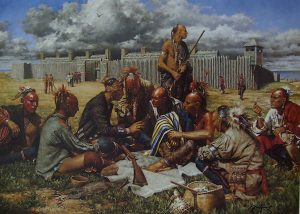 Ottawa chief prepares Indians for fight against British.
Ottawa chief prepares Indians for fight against British.
1763, Pontiac, an Ottawa chief, leads multi-tribe Indian uprising against British frontier forts, beginning in May. Detroit and Forts Pitt and Niagara hold out, but eight others fall, their garrisons and nearby settlements wiped out.
George III issues Proclamation of 1763 in October, fulfilling promise to ban colonial settlement west of Appalachians. Meanwhile, Pontiac forces suffer disease, starvation and desertion of some allied tribes.
In 1764, new British forces break Delaware and Shawnee, while western tribes and French decline to help, and Pontiac alliance cracks. He finally agrees to treaty in 1766.
1763, Slaves rise up on a half-starved sugar plantation in the Dutch colony of Berbice (Guyana), Feb. 23, inspired in part by nearby 1757 Ndyuka revolt. Rebellion quickly spreads to neighboring plantations and 3,000 slaves control southern part of colony for almost a year (half of only 350 white settlers flee), while Dutch collect soldiers from Barbados and Sint Eustatius.
Arrival of 600 soldiers from Amsterdam Jan. 1, 1764 leads to betrayals among slave captains, suicide death of their chief, Cuffy (said to be Akan), and their defeat in April. Estimated 1,800 rebels die in fighting and subsequent executions.
1764, Spinning jenny, invented by James Hargreaves, produces much more yarn for flying-shuttle looms, near Blackburn. Essential to development of factory system for manufacturing cotton.
1764, An Oyo army, including fighters from Dahomey and other Akan states, defeat an Ashanti force.
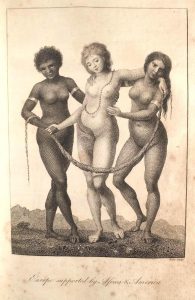
1765-1793, A maroon band in Surinam, led by Boni and separate from the Nyduka, carries on raiding and guerrilla war against Dutch plantations and soldiers for 28 years. When the latter finally discover Boni’s fort in 1772, he escapes and forms a new band.
Boni is utimately killed by the chief of the more numerous Ndyuka maroons, working with the Dutch, February 1793.
1767, Survey completed to determine border between Pennsylvania to north, Maryland and Virginia to south, and Delaware to east. Later known as the Mason-Dixon Line, it will mark off free Pennsylvania from the three slave states.
1767, Thomas Jefferson, 25, inherits 5,000 acres and 52 slaves via father’s will. Begins work on Monticello, 1769; marries Martha Wayles, 1772. They inherit two more plantations and another 135 slaves, including Sally Hemmings, daughter of Martha’s father, John, by an enslaved woman.
At one point, Jefferson mortgages 150 slaves to finance Monticello; as many as 100 slaves take part in construction. Mortgaging slaves, often to London and Amsterdam banks, is more common among planters than mortgaging land.
1769, First Carib War breaks out on St. Vincent, where Black Caribs have long held the island’s north, resisting British who hold plantations in the south and seek to force Caribs to sell their land. Black Caribs, led by Joseph Chatoyer, turn back a full-scale assault. British sign peace agreement in 1773.
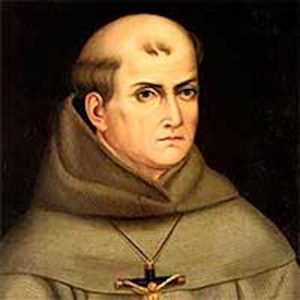 Father Junipero Serra.
Father Junipero Serra.
1769, Franciscan Father Junipero Serra founds Mission San Diego de Alcalá, July 16, the first of nine he establishes in Alte California, extending north to Mission San Francisco de Asis. The Franciscans seek, first, to convert Indians and, second, to establish Spanish control with accompanying soldiers.
The missions apply strict discipline to new disciples who are conscripted for labor and segregated from the unconverted. Old ways of life are disrupted. The Indian population, mainly hunters and gatherers, declines by thousands in the mission districts, mainly as a result of disease.
1769-1776, Fula people of Futa Toro, inspired by fellow Muslims of Futa Djallon, establish their own imamate, through jihad, along the central Senegal river.
